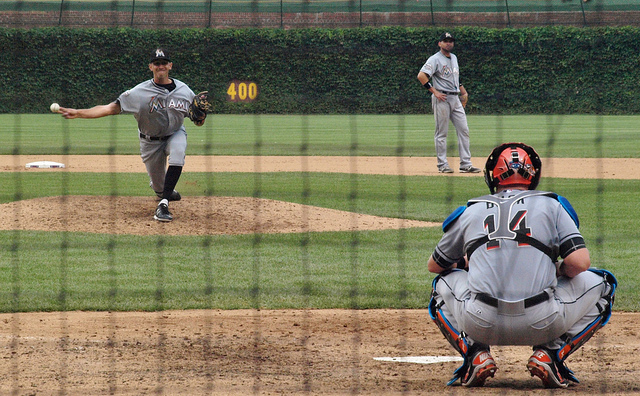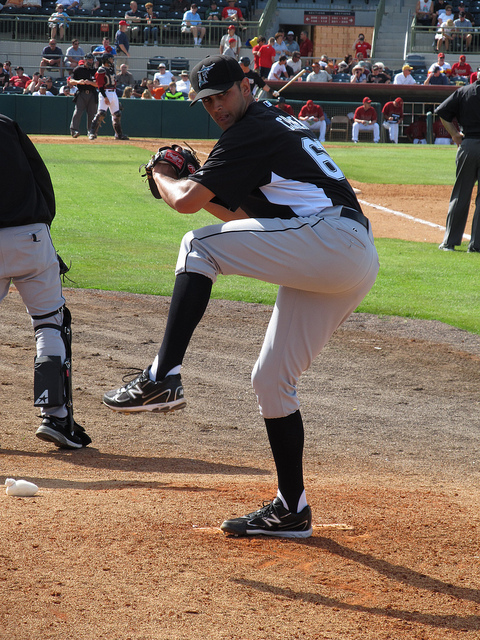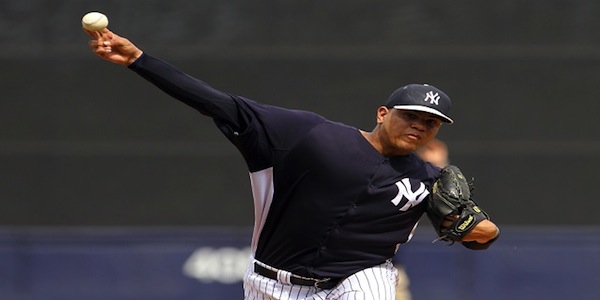The Fantasy Baseball Defense of Steve Cishek


It seems that Cishek’s tombstone is going to read Closer, July 14, 2012 – October 2, 2012. Few appear to believe in the skillset and, upon Jon Rauch signing with the Marlins, many thought Cishek would be Rauch’d quite quickly.
We’ll address the skillset first.
In 2011, he struck out roughly the same amount of batters as he did in 2012 but walked less and got ahead more. That said, he generated more swinging strikes in 2012—a positive sign. Regardless, his career line is a 24.3 K%, 2.57 ERA, 2.85 FIP and 1.21 WHIP. That sounds like the top of the second tier of closing options to me. In fact, since 2011, of qualified relievers, Cishek is tied with Darren Oliver for the 20th best FIP.
Cishek is also a ground ball dynamo – generating the 21st best GB rate among qualified relievers since 2011. Among relievers with a similar amount of ground balls (between 50.7% and 60.2%), the only truly bad relievers are Chad Qualls and Matt Albers. This group is light on the K’s, with only three relievers striking out a batter per inning (but Cishek is one of them). In fact, his K% is closely aligned with Sean Marshall, Aaron Crow, Fernando Rodney, Bobby Parnell and Matt Thornton – all solid relievers.
One of the main problems with Cishek is walks. Among the above ground ball artists, he has the sixth worst BB% — of course he is surrounded by Parnell, Santiago Casilla, Rodney, Crow, Albers and Blake Wood. Aside from Albers and Wood, all these hurlers have made somewhat high BB% work as long as the K% and GB% is there.
The real worry with Cishek is potential platoon dangers. Righties batted .180/.266/.282 off him last year, but lefties hit a hefty .277/.391/.396. That said, lefties didn’t torch him in 2011 (.220/.311/.350) and, for his career, lefties have a .310 wOBA against. Breaking the splits down further, we see that Cishek strikes out lefties more often than righties, but walks way more. He also doesn’t generate nearly as many ground balls against lefties.
Cishek in 2011 against lefties:
|
Pitch |
Counts |
Ball |
Swings |
Whiffs |
GB |
LD |
FB |
HR |
|
Fourseam |
26 |
42.31% |
50.00% |
23.08% |
7.69% |
0.00% |
||
|
Sinker |
239 |
39.33% |
40.17% |
8.79% |
6.69% |
3.35% |
5.86% |
0.42% |
|
Slider |
49 |
30.61% |
55.10% |
20.41% |
12.24% |
2.04% |
2.04% |
0.00% |
|
Changeup |
49 |
40.82% |
48.98% |
18.37% |
6.12% |
6.12% |
2.04% |
0.00% |
Cishek in 2012 against lefties:
|
Pitch |
Counts |
Ball |
Swings |
Whiffs |
GB |
LD |
FB |
HR |
|
Fourseam |
65 |
36.92% |
52.31% |
18.46% |
3.08% |
1.54% |
0.00% |
|
|
Sinker |
264 |
35.98% |
48.48% |
14.02% |
6.06% |
3.41% |
3.79% |
0.38% |
|
Slider |
138 |
34.06% |
39.13% |
11.59% |
4.35% |
3.62% |
5.07% |
0.00% |
|
Changeup |
59 |
49.15% |
42.37% |
8.47% |
5.08% |
5.08% |
5.08% |
0.00% |
All of the above data is from Brooks Baseball – an incredible resource. It does appear Cishek approached lefties a tad differently in 2012: one presumes that he threw a ton more sliders against lefties in 2012 than he did in 2011 – possibly because he had far more success with the sliders against lefties in 2011.
Unfortunately, more sliders didn’t work: he didn’t get enough swings on the slider and even fewer whiffs. This resulted in far less ground balls. So, with fewer sinkers against lefties, they were better able to differentiate between the slider and sinker and then not swing at the breaking pitch. That’s not good, given how lefties consistently pound his sinker (lefties post a .353 average and .529 slugging percentage on his sinker). In 2011, though, lefties “only” posted a .326 average and .488 slugging against the sinker.
So, the odd solution seems to be more sinkers, in order to get more swings at the slider (which worked in 2011). If Cishek gets back to a similar approach to lefties as he did in 2011, he can go a long way to mitigating their success against him.
Those are the warts (walk rate and platoon split). Still, relievers have survived with drastic splits. Octavio Dotel saved 22 games in 2010 with lefties posting a .411 wOBA against him. In 2004, he saved 36 games and lefties posted a .345 wOBA. In 2000, he saved 16 games with lefties destroying him (.900 OPS).
In addition, there isn’t a ton of competition in the Marlins’ pen.
Jon Rauch hasn’t come close to the innings or K’s he totaled in Washington in a long time. In 2006, he struck out 86 batters and followed that up with 71. However, for the past three seasons, he has battled nagging injuries and barely stumbled past an average of 55 innings. He doesn’t strike anyone out (18.8% is his best K% of the last three seasons), but he doesn’t walk anyone.
While Miami was one of the better spots for Rauch to land, he doesn’t do anything exceptional (aside from not walking anyone). Before the move, I had him pegged for a 4.01 ERA, 1.20 WHIP and 41 K’s. There is probably a bit of upside on the ERA in cavernous Marlin Stadium, but that’s not spectacular.
A.J. Ramos is the only real live arm in this pen. For more coverage of him, check here. For an in-depth look at the other Marlins relievers and every other pen in baseball, get my 2013 Reliever Guide with the Fantasy Fix Draft Guide, here.
The bottom line is that Cishek has the ability to solve some of his platoon woes from 2012 and hold the closer role the entire season. If he does, he’ll be a decent value given his ratios and K%.





